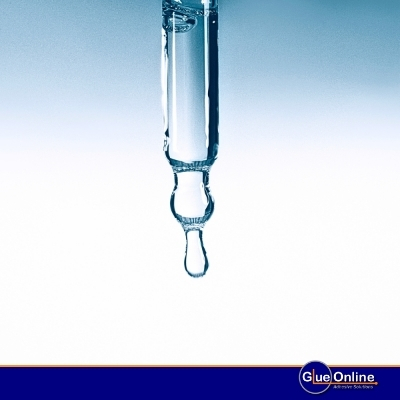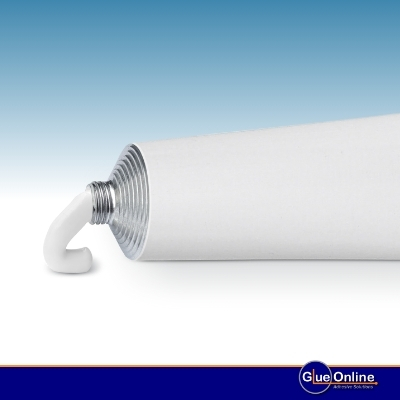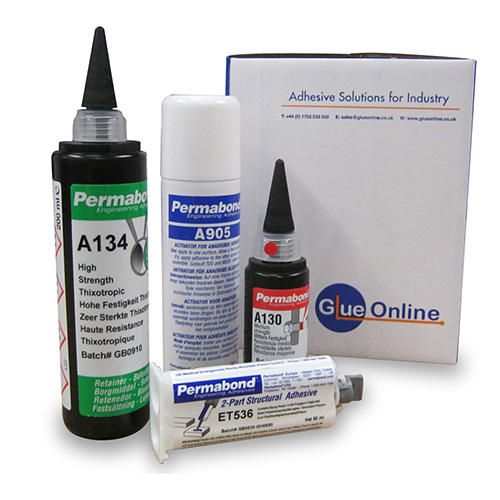Adhesive Solutions
Adhesives offer extremely good performance in a broad range of assembly applications.
By choosing the most appropriate type and grade of adhesive, it is possible to bond almost all types of materials of any substance or category whether : “animal, vegetable or mineral”.
This means that adhesives will provide for the efficient bonding to or between almost everything – all types of wood, textiles, stones, minerals, metals, plastics and even onto or inside humans and animals. The only exceptions are liquids and gases.
Viscosity
Adhesives are available in a wide range of viscosities from runny flowable liquids which are quick to apply and disperse, to paste-like gels which provide a range of gap fill capabilities.


Low viscosity
Low viscosity, flowable liquid adhesives will flow freely through the mating joint faces in close fitting, smaller assemblies or within a part, as well as into hairline gaps, cracks, crevices and surface imperfections by a wicking or penetrating process.


Higher viscosity
Higher viscosity, pasty or gel type adhesives have the capability of filling gaps, cavities and imperfections which may vary over the length of an assembly and may be several millimetres or up to 0.25 inches thick. Higher viscosity, non-sag paste grades of adhesive make it easy to form a continuous surface to surface bond and a quite substantial gap fill where clearances are large and variable between parts.
Processing
Adhesives provide for simple processes, easy handling, quick and easy dispensing, simple preparation and clean up, short production process times and they do not require highly skilled staff to mix, dispense, assemble, clean and trim.
Adhesives Types
Adhesives come in many types of material, chemistry and formulation. The most common types used in industry and supplied by us are :
- Acrylic – often also called acrylates, methacrylates and structural acrylics
- Anaerobic – often called gasket resins, retainers, threadlockers, pipe-sealers
- Cyanoacrylate – often called super-glues or instant glues
- Epoxy – there are two types – single part heat cured and two part epoxies
- MS Polymer – the latest type of PU technology for water use and low odour
- Polyurethane – with both standard and hybrid technology
- Silicone – The classical original adhesive sealant still widely used
- UV Curable – mostly clear adhesives cured after exposure to ultra-violet light
- Other Types of adhesive used in some industry areas are : Contact, Hot-melt, PVA and others.


Anaerobic Adhesives are used in production line assembly processes to hold and glue parts together and to seal joints permanently. They are also used during maintenance and repair tasks to lock and reseal fasteners and parts together after disassembled parts are re-assembled.
- Cyanoacrylate Adhesives or super-glues are ultra-fast setting glues used for rapidly bonding smaller parts or assemblies. They are particularly good for bonding rubbers which are difficult with some other glues.
- Two part Acrylic Adhesives are versatile formulations developed to provide superior bonding strength and durability for use with a wide range of material substrates. They are either supplied in twin barrel cartridges which are mixed when dispensed, or are poured out as part A and part B and mixed together.
- Single part Epoxy Adhesives are heat-cured which allows bonding speeds to be timed to coincide with other processes and final assembly adjustment. The flexibility of single part epoxy adhesives maximises efficient production rates. They offer complete working control of the adhesive and assembly before curing because they do not cure until heat is applied.
- Heat cured Epoxy Adhesives are ideal for bonding complicated multi-part heat exchanger / radiator assemblies with the end plates, side frames, top and bottom reservoirs and small bore radiator tubing – all bonded into place with the adhesive providing smooth radiused fillets at all interfaces, just like soldered joints.
- Two part Epoxy Adhesives are versatile formulations developed to provide superior bonding strength and durability for use with a wide range of material substrates. They can be chosen to provide either fast or slow adhesive application and curing speeds, depending on the needs for the job and the grade chosen. They cure at room temperature and need no external heat source.
- Structural Adhesives such as epoxies and acrylics are a superior resource for fastening components together to meet the demands of structural bonding of larger as well as small assemblies in high performance applications.
- Acrylic and Epoxy Adhesives have the strength and durability to replace mechanical joining techniques such as welding, riveting and screwing.
The bonding of high tech composites is an ideal application for structural adhesives such as acrylics and epoxies, where adhesives will bond all of the elements together to form the composite or sandwich and they will bond the composite to mating parts to form an integral assembly. They will bond well to both hard and soft plastics, as well as to fibres, textiles, metals, woods and to almost all other substances.
- Structural adhesives are ideal for bonding complex products such as bicycle frames and other assemblies which were traditionally brazed or welded. Single part epoxies will bond like solder when heat cured to flow into every part of all joint mating surfaces including those areas hidden inside the tubes.
- Adhesive Sealants are used for bonding components and at the same time, they will provide considerable gap filling and sealing capabilities. The original modern sealants were silicones, which are very versatile and are still popular and widely used. More recent types of adhesive sealant with other qualities are polyurethanes, hybrid polyurethanes or hybrid polymers and the more recent MS polymers. The later formulations are solvent-free and have low odour and in the case of MS polymers, have virtually no odour. All of the adhesive sealants will seal and protect against moisture and the ingress and escape of water, but the very versatile MS polymers can be applied onto wet surfaces and they can even be applied under water – they will bond perfectly onto the vessel walls or joints inside a water vessel.
- UV Curable Adhesives are adhesive resins which are cured or hardened by exposure to ultra-violet light. They are ideal for transparent materials such as glass, acrylics, perspex, plexiglass and other transparent plastics. These adhesives are very versatile because after dispensing, they remain liquid within the joints during the assembling of parts, adjustment, alignment and completion of the assembly. As soon as everything is ready, the adhesive can be cured or hardened in seconds by exposing the adhesive in the joints to ultra-violet light.
Contact Us
If you have any questions about our certifications, approvals, or adhesive solutions, our knowledgeable team is here to help. Feel free to reach out to us via phone +44 (0) 1702 533020, emailing our sales team, or through our website contact form, and we will be happy to assist you.

